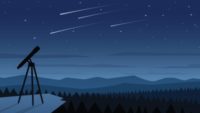Latest antimatter research undermines big bang theory …read more Source: creation.com
By Thomas Perry Source: The Milky Way Over Yellowstone is Outrageously Beautiful For more content like this visit REALfarmacy.com. These photographs of Yellowstone National Park by Dave Lane are so gorgeous it’s difficult to believe they’re from real life. Lane photographed the Abyss Pool in Yellowstone National Park just after a storm had passed the area — you can catch the hint of a flash of lightning between the trees in the center light. […] Source: The Milky Way Over Yellowstone is Outrageously Beautiful Learn more at REALfarmacy.com. …read more Source: realfarmacy.com
Big bang theory only appears to be scientific because people are exposed only to the evidence that appears to support it. …read more Source: creation.com
Creationists should now avoid using this argument. …read more Source: creation.com
How did Phobos and Deimos come to be so close to the red planet? …read more Source: creation.com
By Dr. Jason Lisle Physics dealing with how the universe operates at very small scales—interactions involving particles smaller than atoms—is called quantum mechanics. …read more Source: AIG Daily
By Dr. Danny R. Faulkner Dr. Danny Faulkner evaluates 23 arguments for recent origin for the sun, stars, and galaxies. …read more Source: AIG Daily
By Ken Ham If you’ve ever smelled a meteorite, it probably didn’t have much of an aroma. But that’s not the case with the newest addition to the Field Museum of Natural History in Chicago. This four-pound visitor from outer space (a rare stony meteorite that is called a carbonaceous chondrite) crashed down in Costa Rica’s Alajuela province back in April. And when scientists received the sample, it smelled distinctly like Brussels sprouts! Why—and what does that have to do with creation and evolution? Well, to answer that question, I’ll share some of the text from the article, answering the [More]
By Dr. Danny R. Faulkner Two recent studies of astronomical interest have been in the news. Both are about planets: one near (Saturn) and one far (K2-18b). …read more Source: AIG Daily
Is the physical data enough to justify any cosmological theory? …read more Source: creation.com
Big Bang scientists recently used a new method to estimate the universe’s age. This method yields an age estimate that could be over two billion years younger than their current age estimate of 13.8 billion years.1,2 However, this new method has large uncertainties, so not too much can be made of this result. It’s mainly of interest because it reminds us how Big Bang age estimates often contradict one another. … More… …read more Source: icr.org
By Ken Ham Naturalistic scientists disagree on the age of Saturn’s rings. NASA’s Cassini spacecraft had a planned crash into the planet in 2017. The data that it gave was interpreted as evidence that Saturn’s pristine rings formed just 200 million years ago in the evolutionary timescale of our solar system. But a new study disagrees. It states that “processes that preferentially eject dusty and organic material out of Saturn’s rings could make the rings look much younger than they actually are.” This study says the rings are 4.5 billion years old. So exactly how old are Saturn’s rings? …read [More]
By Dr. Danny R. Faulkner A new study raises another problem that no one seems to be talking about. Where did this galaxy dust come from? …read more Source: AIG Daily
By Dr. Danny R. Faulkner Evaluating 25 astronomical arguments for recent origin for the solar system found some to be wanting and others appear to be sound. …read more Source: AIG Daily
By Dr. Danny R. Faulkner A recent New Scientist article entitled “What if there was no big bang and we live in an ever-cycling universe?” has generated great discussion. …read more Source: AIG Daily
We present reasons why Uranus and Neptune are young, not billions of years old, as claimed in the BBC-TV program The Planets. …read more Source: creation.com
We present reasons why Jupiter is young, not billions of years old, as claimed in the BBC-TV program The Planets. …read more Source: creation.com
In theory, we shouldn’t be here. …read more Source: creation.com
We present reasons why Jupiter is young, not billions of years old, as claimed in the BBC-TV program The Planets. …read more Source: creation.com
We present reasons why Earth and Mars are young, not billions of years old, as per the BBC-TV program The Planets. …read more Source: creation.com
We present reasons why Mercury and Venus are young, not billions of years old, as per the BBC-TV program The Planets. …read more Source: creation.com
Could extrasolar planet GJ 357 d, orbiting a nearby red dwarf star, support liquid water or life? More evolutionary hype. …read more Source: creation.com
Can naturalistic theories explain their origin and properties? …read more Source: creation.com
It’s an ‘out there’ concept that doesn’t help to explain why we are down here. Read More
By Dr. Jason Lisle Unfortunately, many Christians have bought into the idea of extraterrestrial “alien” life without critically assessing such a belief in light of Scripture. …read more Source: AIG Daily
Is the fine-tuning of the universe evidence for divine design? …read more Source: creation.com
By Dr. Andrew A. Snelling Geologists are uncovering evidence that meteors struck the earth throughout the Flood. Could they even have played a role in starting the Flood? …read more Source: AIG Daily










































